Handmade Wooden Toy Design Ideas For Cognitive Development Of Toddlers
Apr 01, 2021 | Kshitij Gangurde
 A recent John lewis (2020) report mentioned about the resurfacing of wooden toys, with the increasing disregard for plastic and sustainability taking center stage in buying decision, There are many reasons wooden toys are better—not only for your child, but for the environment as well. They’re more durable, can be shared, sustainable (yielding less waste than their plastic counterparts), biodegradable and may even be made with sustainable and organic wood. Good quality, eco-friendly wooden toys also don’t contain harmful chemicals like PVC, phthalates, or similar chemicals used in plastic toys.
A recent John lewis (2020) report mentioned about the resurfacing of wooden toys, with the increasing disregard for plastic and sustainability taking center stage in buying decision, There are many reasons wooden toys are better—not only for your child, but for the environment as well. They’re more durable, can be shared, sustainable (yielding less waste than their plastic counterparts), biodegradable and may even be made with sustainable and organic wood. Good quality, eco-friendly wooden toys also don’t contain harmful chemicals like PVC, phthalates, or similar chemicals used in plastic toys. Brain Development of 1-2 years old Toddlers
There are four main areas of development: motor (physical), language and communication, social and emotional, and cognitive. Brain development is part of cognitive development. Cognitive development describes how a child’s intellect grows, and includes thinking, learning and problem-solving skills. These skills affect all other areas of development.
Fine motor skills are all part of a toddler’s amazing development. What we take for granted, such as picking up a beaker, holding it, and then taking a sip, requires a tricky combination of thumb, finger, hand and head movements.
Even playing with toy bricks develops these skills as the toddler is learning that it takes care to stack them, or they fall down. So, helping to develop toddler’s fine motor skills supports all the other skills they’ll need during the rest of their life.
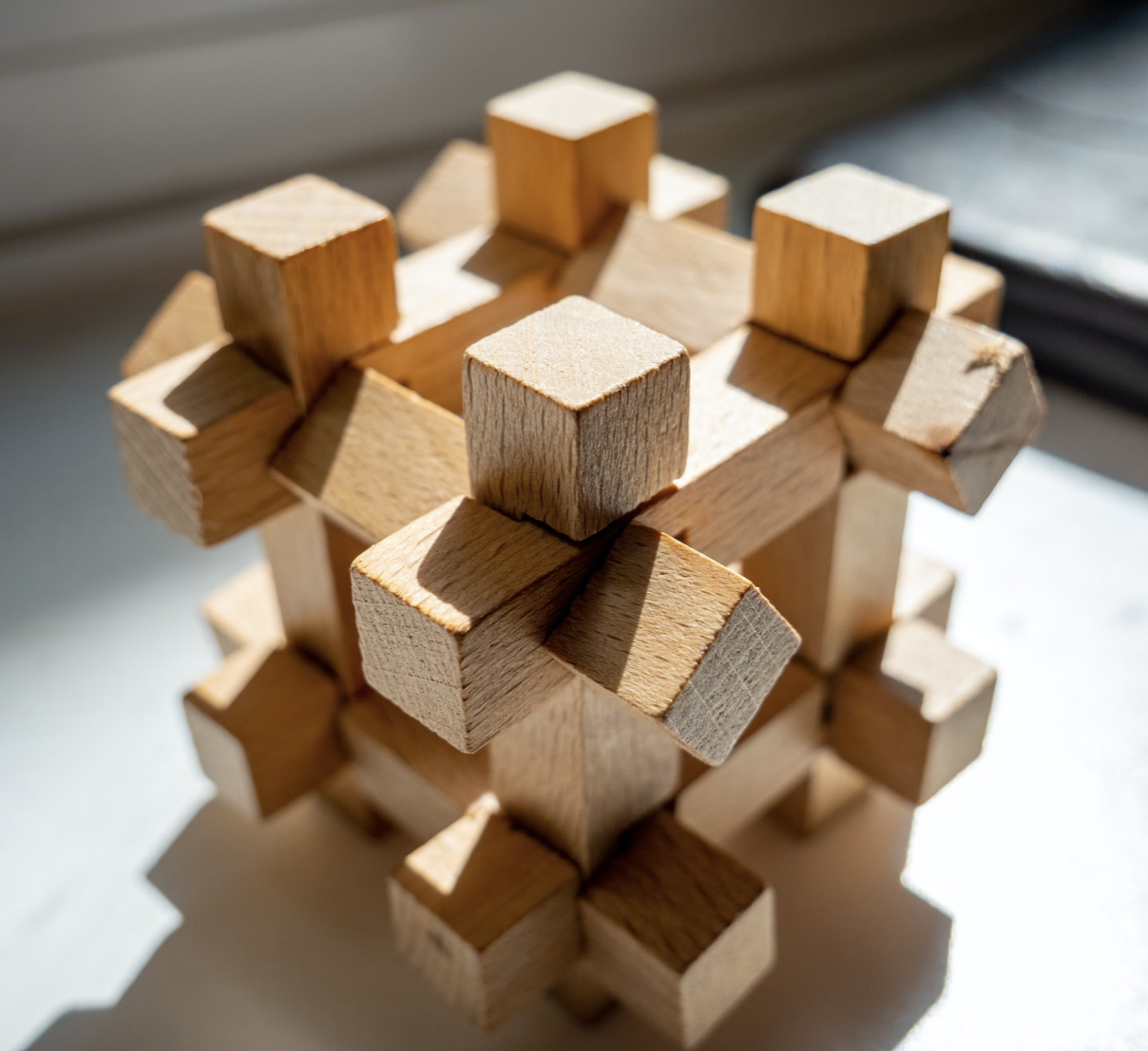
Fig 1: A sample wooden toy designed to improve the motor skills of the baby
Few examples of the products designs internally by the RHM team are :
The BLOCKed Puzzle Version -1
After the age of 11 months, a baby tries to hold things that can fit in their hand grip. They don’t understand the tactile senses and that surprises them. These babies start to understand the orientation of various objects and learn by looking at how others handle the objects. These babies do trial and error till they can fix something given to them.
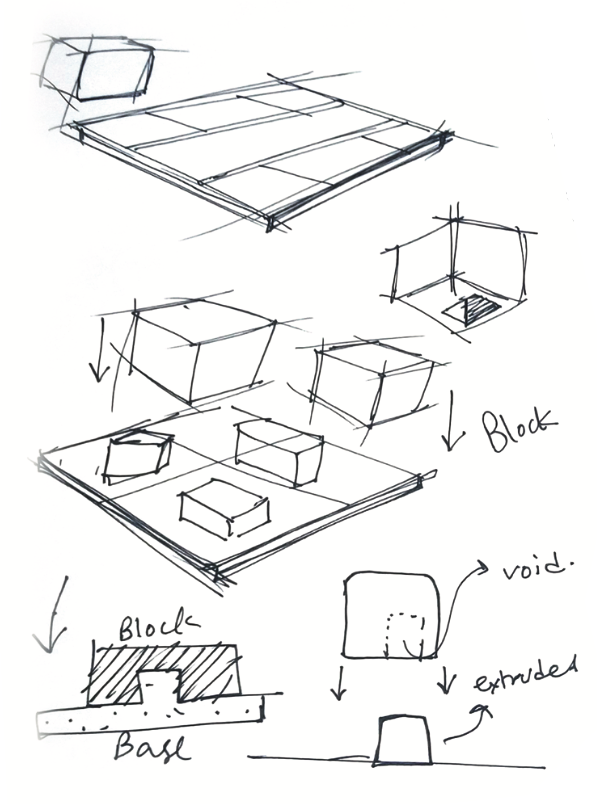
Fig 2: Mood diagram of a wooden toy designed to improving motor skills of the baby.
Here is a concept that helps to improve the motor skills of the baby. This is a concept, where there are some extruded blocks on a base plate and there are separate blocks that have voids of the same. The baby has to pick up the block in his/her hands and put it in the right place on the plate. This won’t be easy for the baby initially. But after several tries, he would place one block at its place and it will create excitement in his/her mind to put all of them one by one. This will improve the baby’s sense of direction and sides. Motor skills will be brushed up when he/she tries to figure out the right placement.

Fig 3: Images of the final version of wooden toy
The Blocked Puzzle - Version 2
This concept is an improvised version of the previous model. Here the shapes have been added and the blocks are made handier with a grip on top. This will help the baby to improve observation and differentiation skills. The use of different woods makes the product adapt two colours and texture while the colour difference helps the baby to understand colour contrast in a better way.
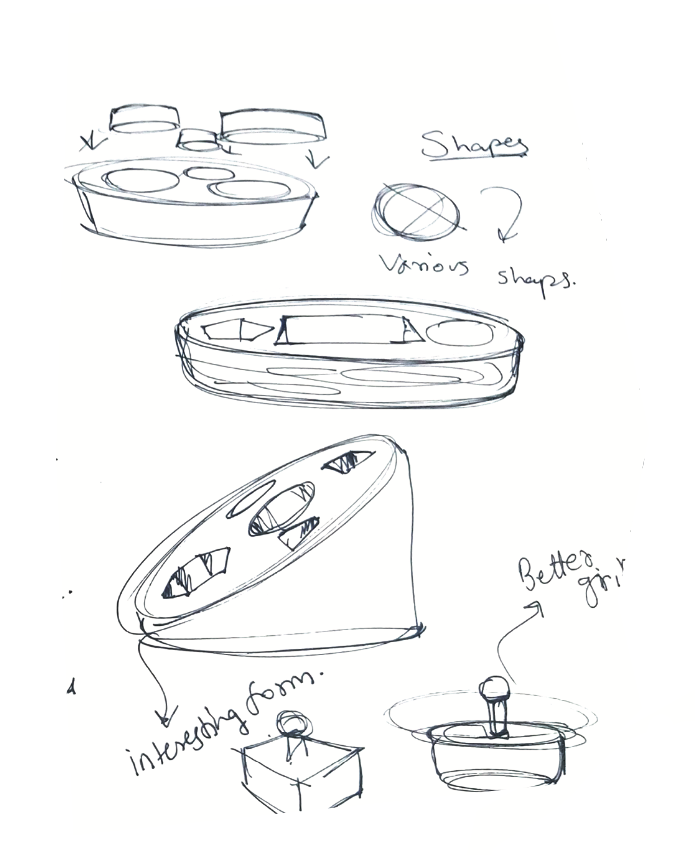
Fig 4: The 3D mood diagram toy is made from sustainable wood and is FDA regulated
Research states that unstructured playtime—open-ended, simple wooden toys, for example—as both valuable and favored over classroom time. Children’s imaginations soar and their creative side enters in un explored territory as they play with things that don’t have an obvious, single use. Imagine a toddler playing with wooden blocks and with a limited creative mind create multiple things with few blocks of wood.
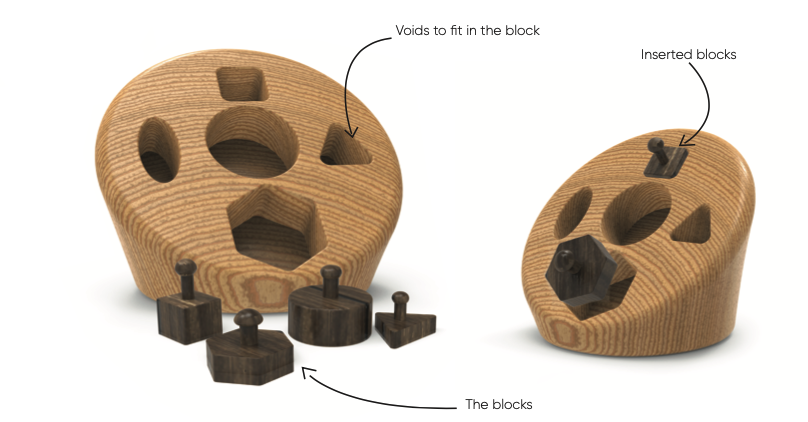
Fig 5: The wooden toy is made from sustainable wood
The sound BLOCKS Version 3
According to various studies, most new-borns startle or "jump" to sudden loud noises. By 3 months, a baby usually recognizes a parent's voice. By 6 months, babies can usually turn their eyes or head toward a sound. By 12 months, babies can usually imitate some sounds and produce a few words. Firstly, at birth, a baby's ears will still be full of fluid, which may take some time to completely clear. Also, the parts of a baby's brain that deal with hearing are still developing.
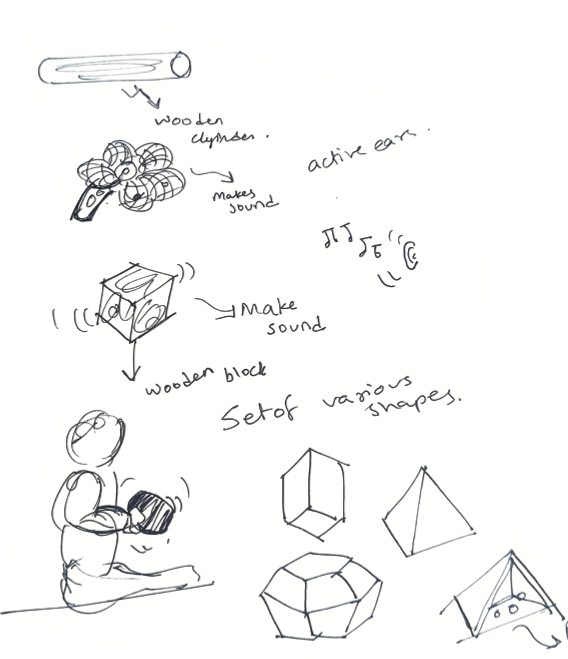
Fig 6: The sound block wooden toy helps in hearing development by hearing contrast of various sounds.
The concept here is focused on developing the hearing contrast of a child by using sounds of various frequencies.
This concept is about a set of hallow wooden shapes which has small balls inside it. Each shape has different number of sides and different number of balls inside. The thickness of the walls of the shape is less, which makes it lighter in weight.
Whenever the baby picks up the wooden block, the ball will roll and hit the walls creating small sound. This will make the baby curious and he/she will start moving it in order to make that sound again. Each time the baby will change the block, a different sound will come. This will sharpen the hearing skills and his/her alertness towards sounds.
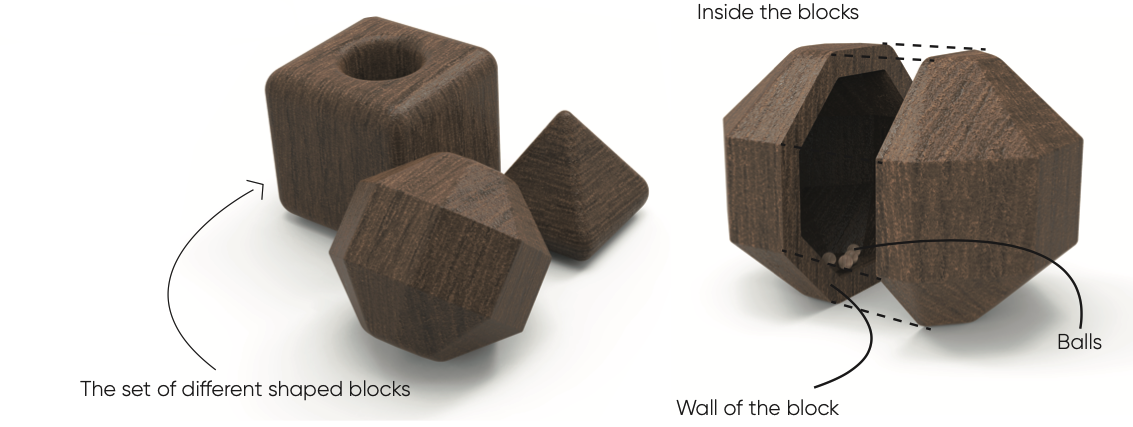
Recommended








